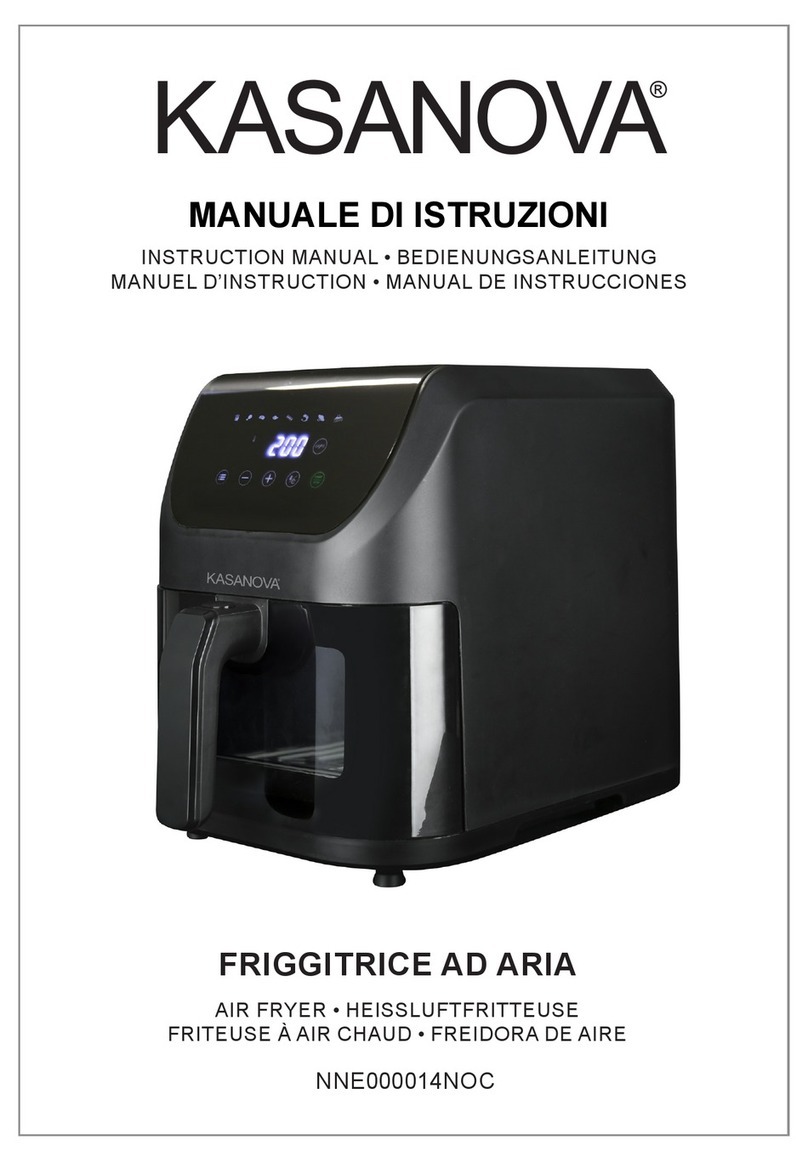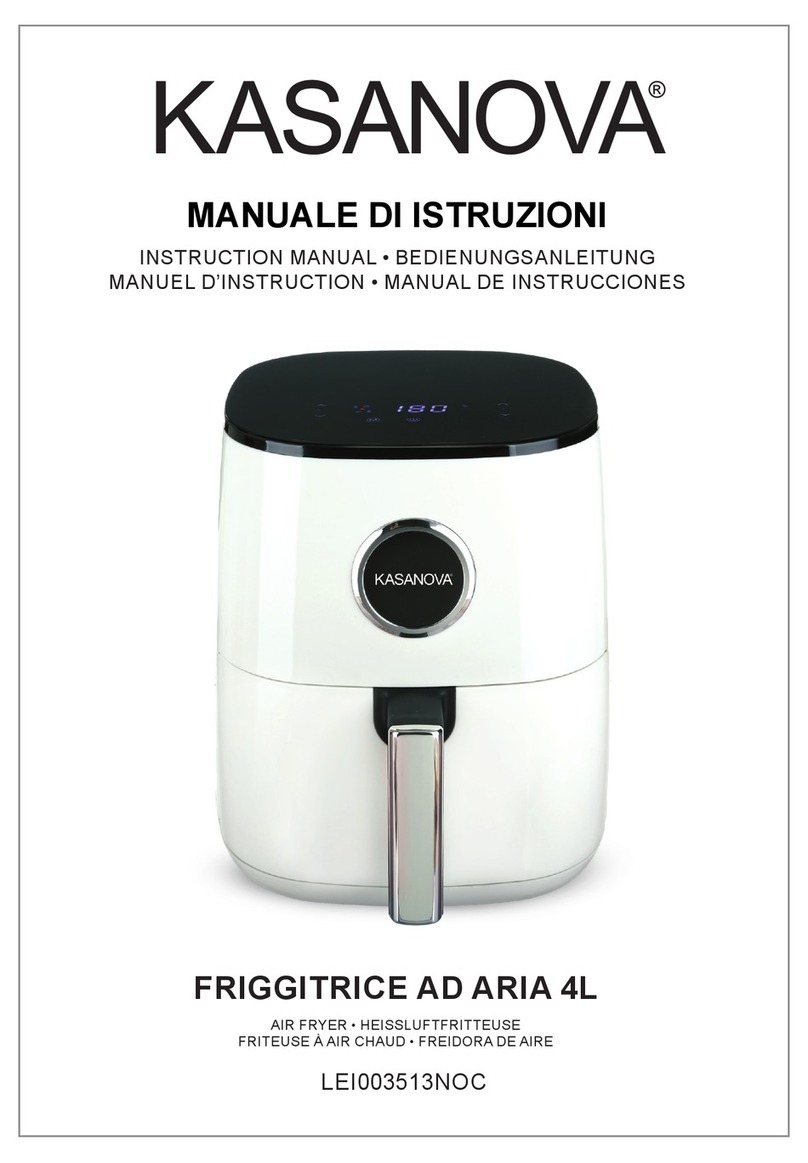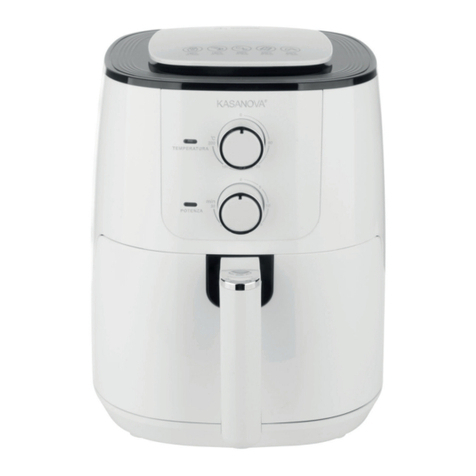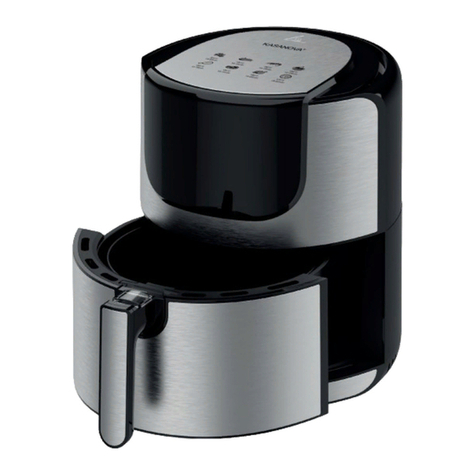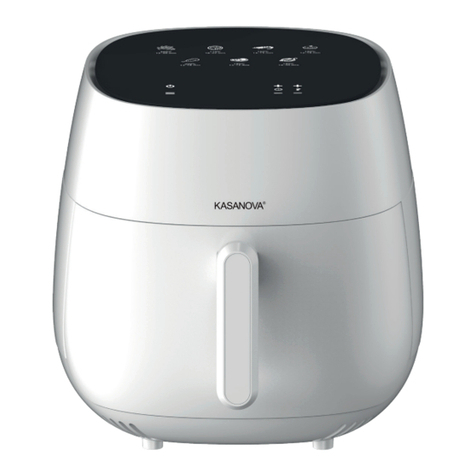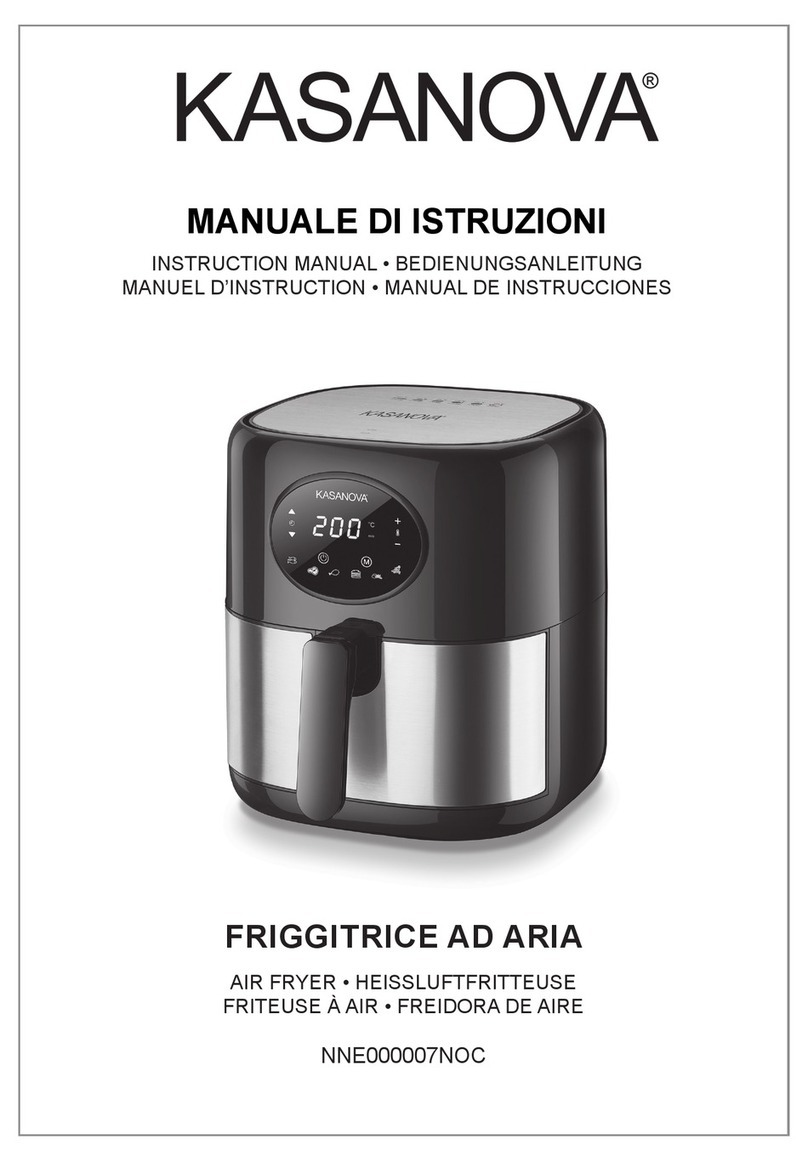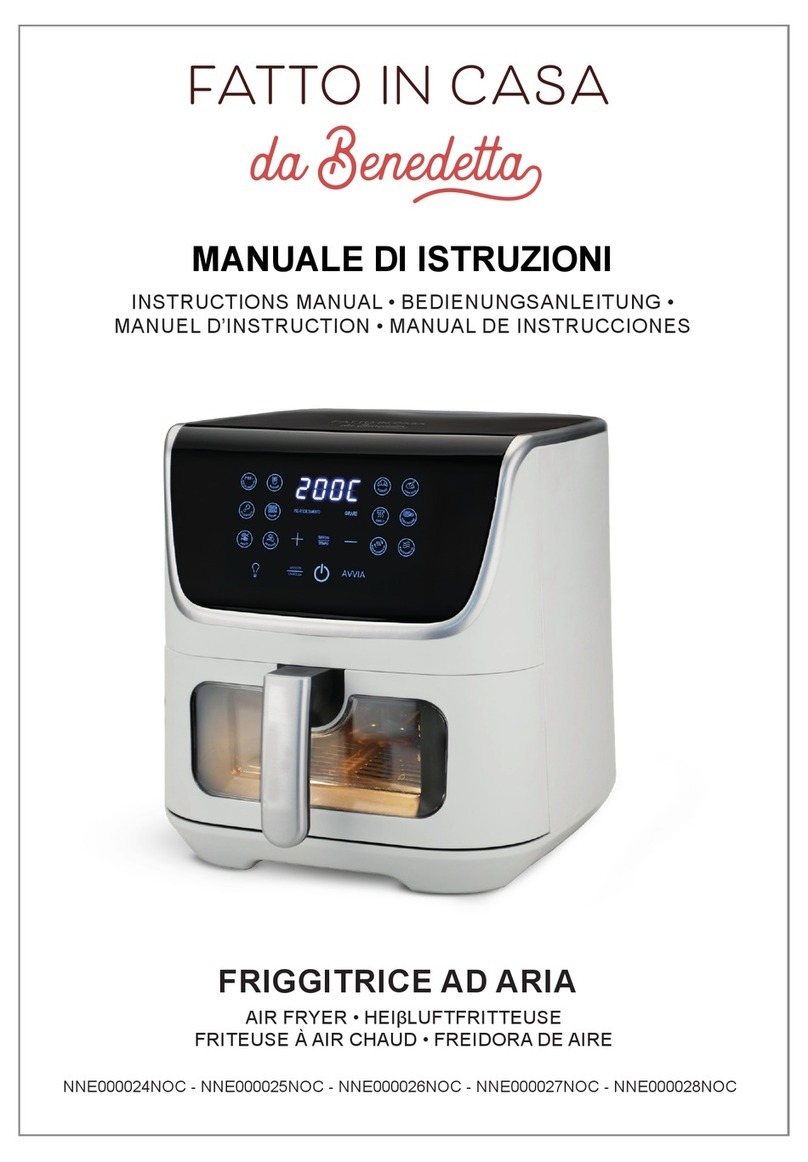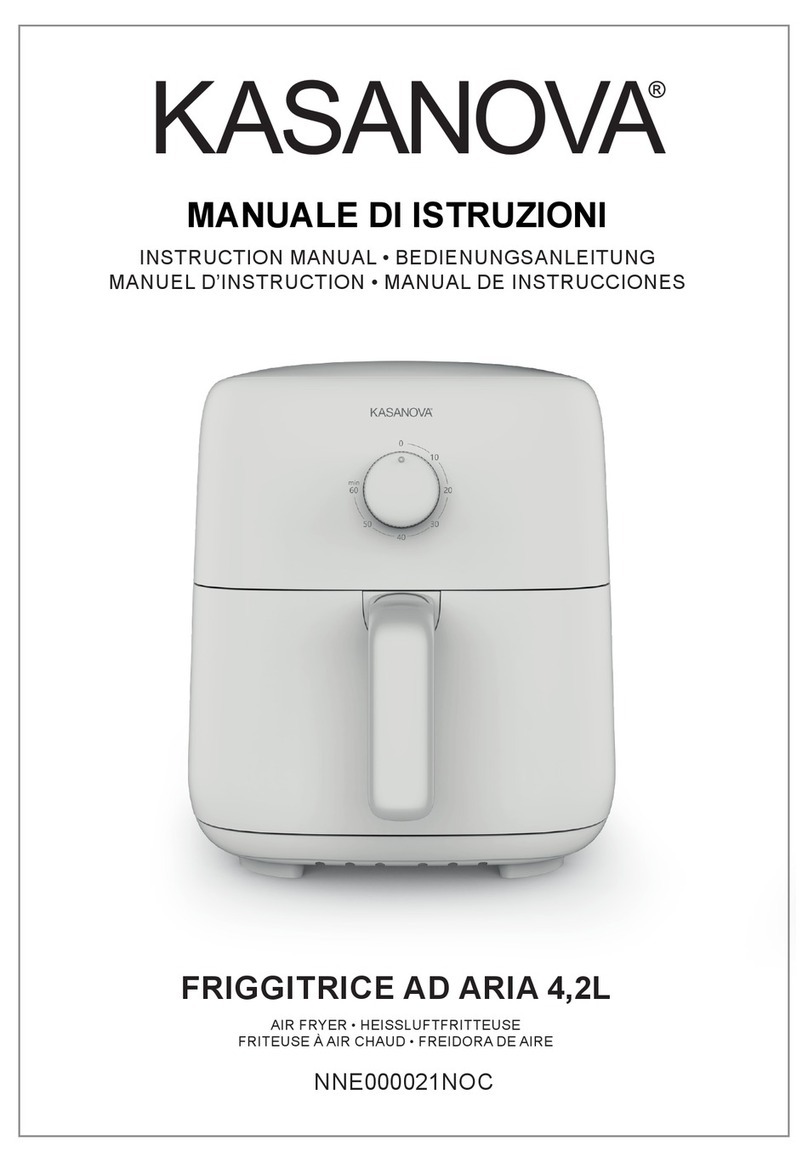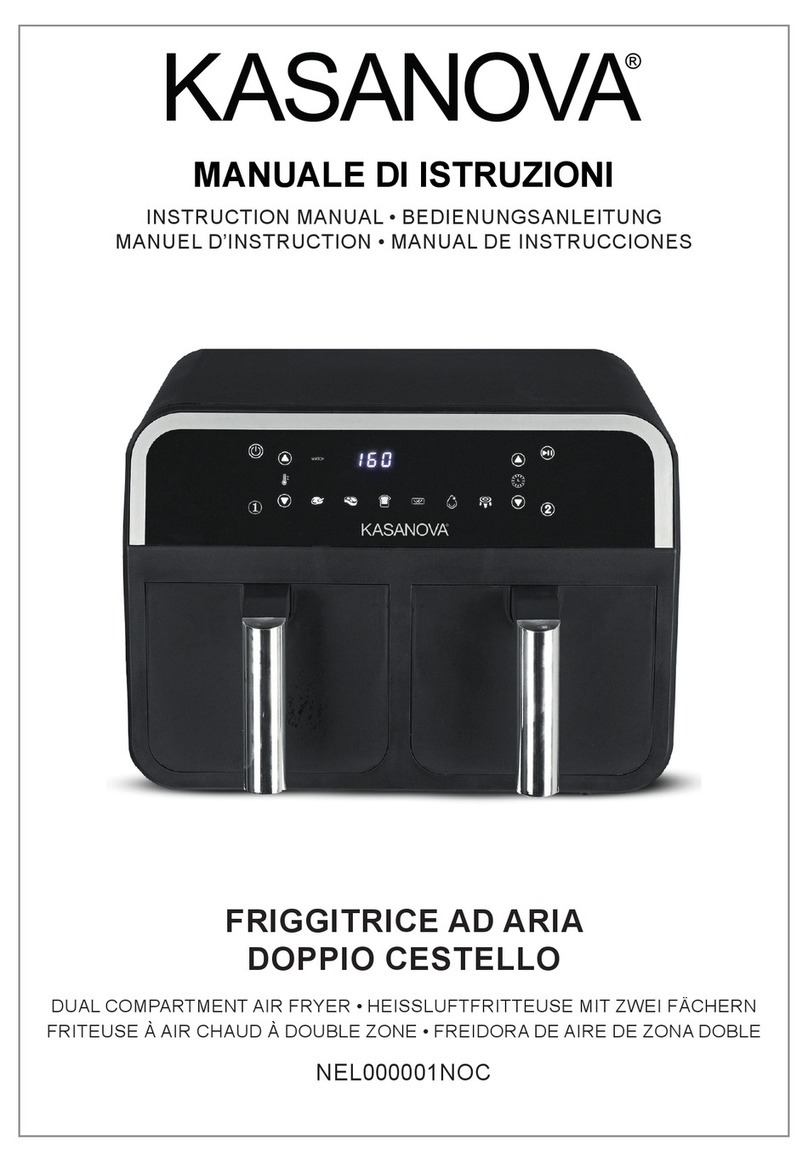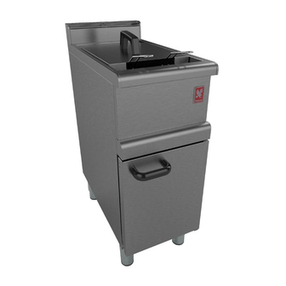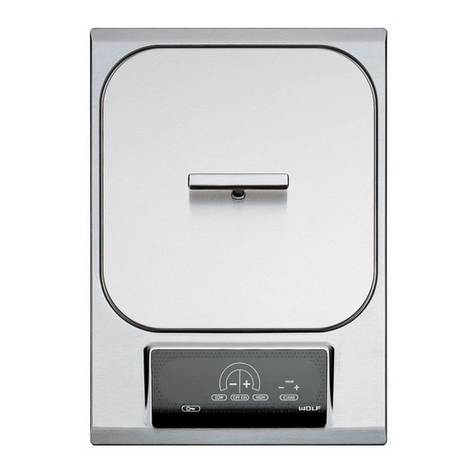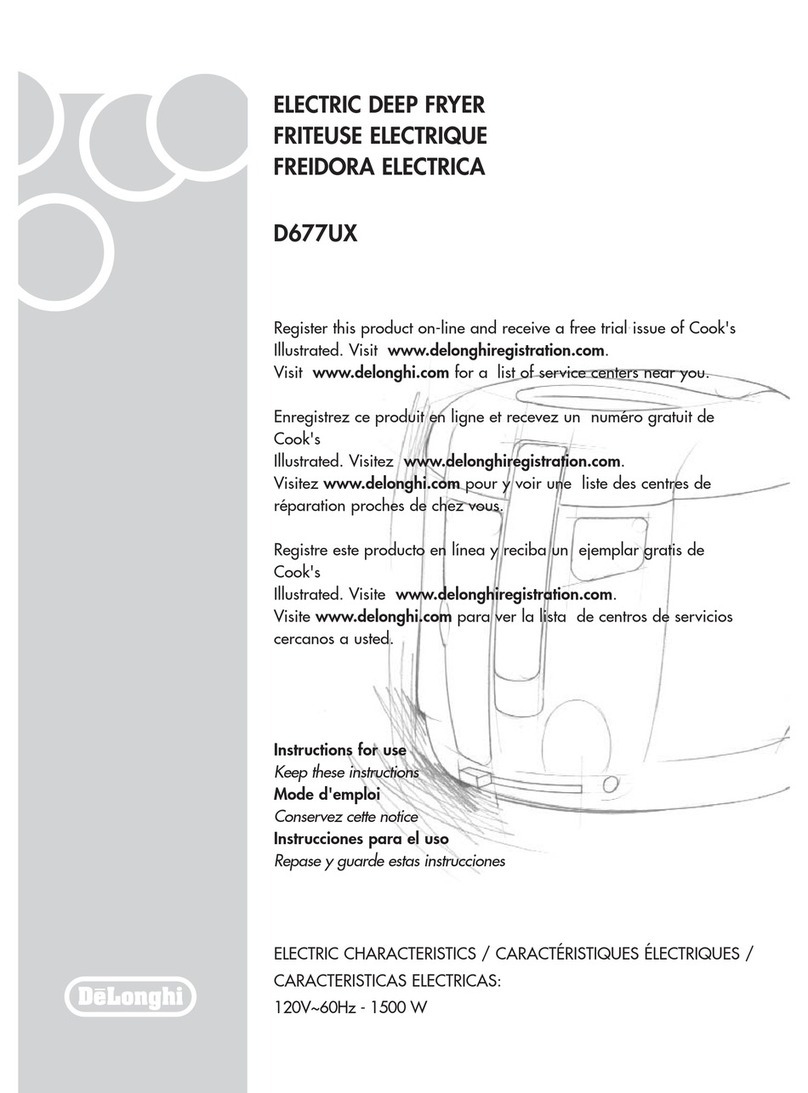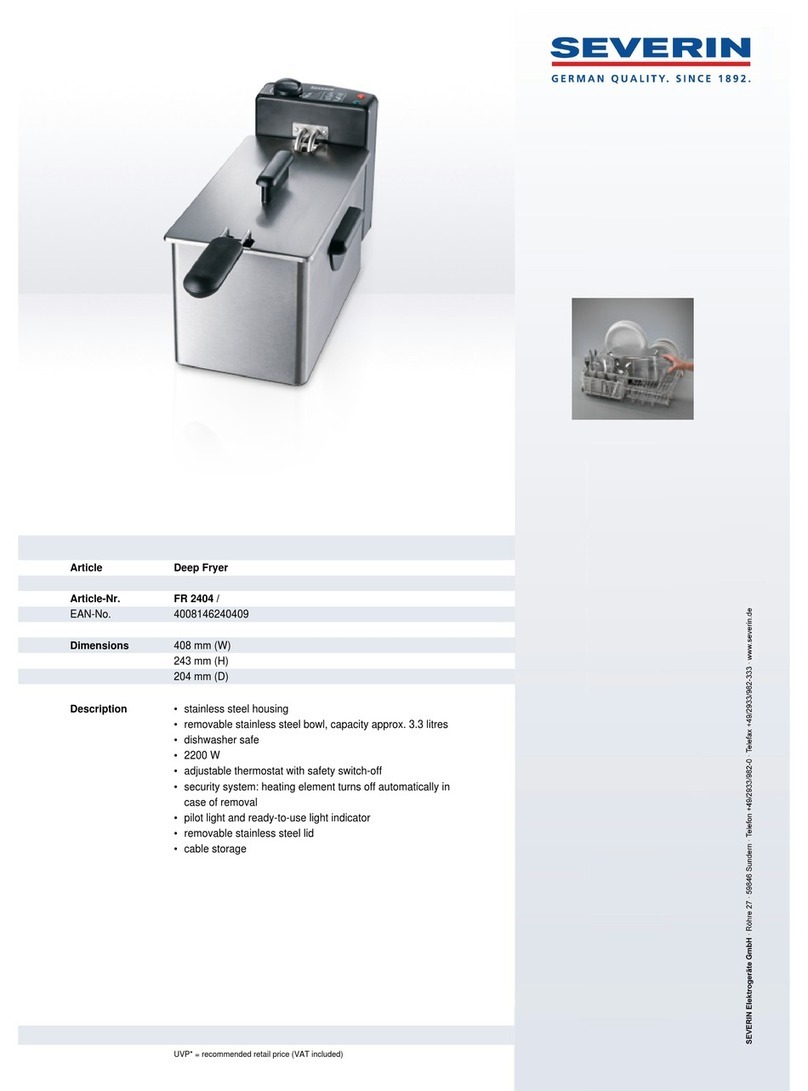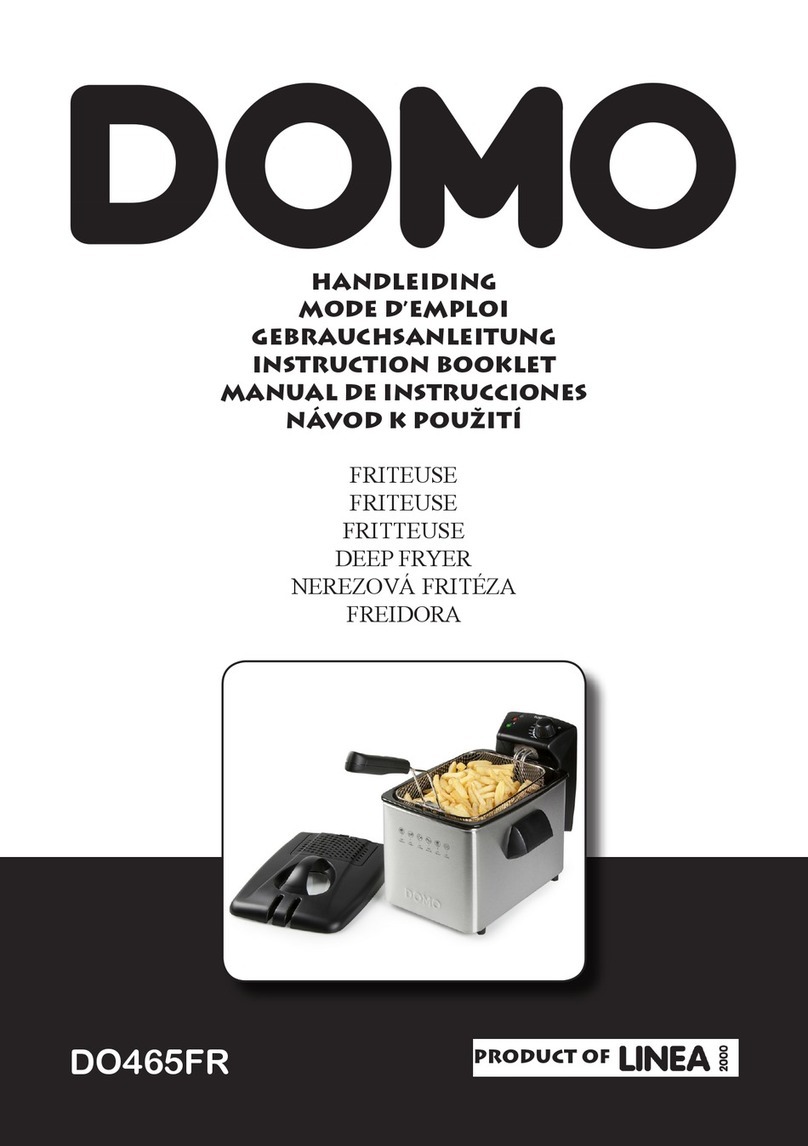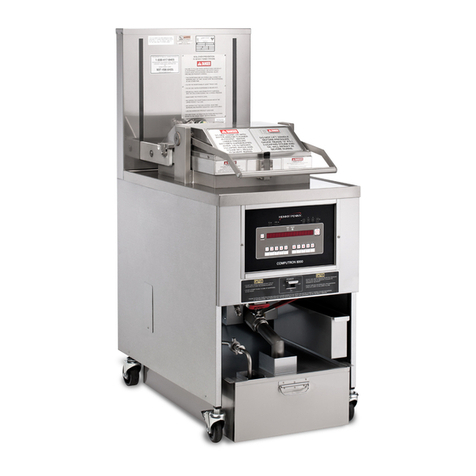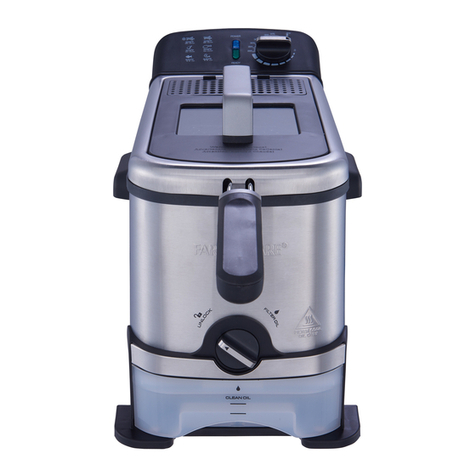
8FRIGGITRICE ITA
MANUALE DI ISTRUZIONI
• Chiudere quindi il coperchio (B). Assicurarsi che entrambe estremità
del manico (G) siano saldamente inserite e ssate agli inviti (B) e
che il coperchio sia completamente chiuso.
• È possibile osservare l’avanzamento della cottura attraverso la
nestra di ispezione (C) nel coperchio (B) Quando il cibo raggiunge
la cottura desiderata, spegnere l’apparecchio spostando la
manopola della temperatura (H) in senso antiorario no allo 0.
Scollegare il cavo di alimentazione dalla presa
• Aprire il coperchio (B).
• Sollevare il cestello di frittura (D) attraverso l’impugnatura (G)
e farlo scolare servendosi del bordo del recipiente dell’olio (E).
Questo consente l’eccesso di olio / grasso di ricadere nella
friggitrice. Sollevare leggermente il cestello di frittura (D) e scuotere
l’olio residuo rimanente prima di sollevare completamente il cestello
di frittura (D) dall’apparecchio.
Per evitare ustioni provocate dall’olio caldo chiudere
nuovamente il coperchio rimovibile appena terminate la
scolatura
Posizionare il cibo fritto in contenitore preparato, ad es. una ciotola.
Dopo l’uso, l’apparecchio deve essere sempre spento regolando la
manopola di temperatura (H) in senso antiorario in posizione OFF e
quindi scollegando la spina dalla presa di sicurezza. Lasciare rareddare
l’apparecchio a temperatura ambiente prima di pulirlo.
Quando hai nito di friggere:
Non spostare la friggitrice no a quando non si è rareddata
completamente.
Svuotare il recipiente dell’olio:
Mentre l’olio è ancora liquido, è possibile versarlo dalla vaschetta dell’olio
(E) e conservarlo in un contenitore.
Utilizzare una protezione adeguata, ad esempio guanti, per evitare
